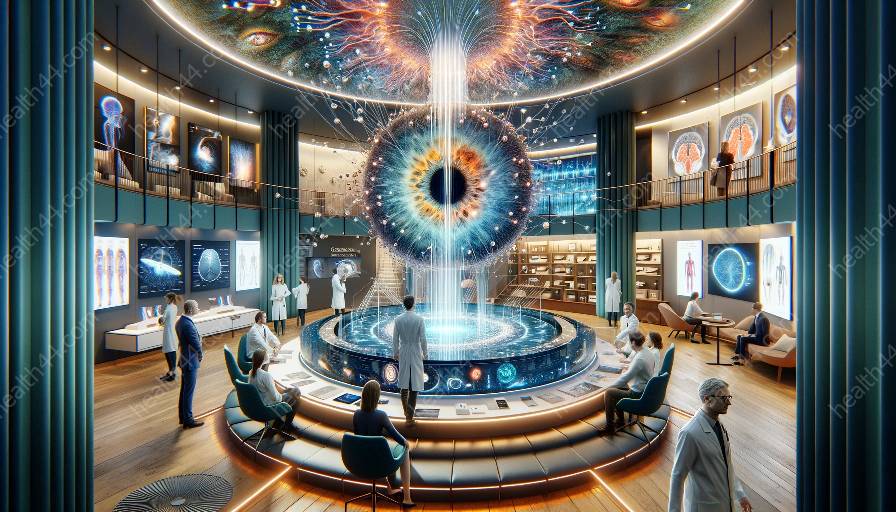Visual perception training plays a crucial role in the independence of vision rehabilitation patients. It encompasses a range of techniques and interventions aimed at improving the ability to interpret and understand visual information. In the context of vision rehabilitation, visual perception training can significantly impact an individual's ability to perform daily activities, navigate their environment, and ultimately enhance their overall quality of life. To thoroughly understand the relationship between visual perception training and the independence of vision rehabilitation patients, it is essential to delve into the key aspects of visual perception and its role in the rehabilitation process.
The Significance of Visual Perception
Visual perception refers to the brain's ability to interpret and make sense of visual stimuli received through the eyes. It involves complex processes that allow individuals to recognize and interpret visual information, including shapes, colors, depth, and movement. Effective visual perception is essential for activities such as reading, recognizing faces, and navigating the environment. When visual perception is impaired due to conditions such as macular degeneration, glaucoma, or cerebral visual impairment, individuals may experience challenges in these everyday tasks, leading to a reduced sense of independence.
Understanding Vision Rehabilitation
Vision rehabilitation is a comprehensive approach aimed at helping individuals with visual impairments adapt to and manage their condition. It encompasses a range of services, including visual training, adaptive strategies, and the use of assistive devices to maximize the remaining vision and enhance functional abilities. Vision rehabilitation seeks to minimize the impact of visual impairment on daily living, enabling individuals to maintain or regain independence in various aspects of their lives.
Influence of Visual Perception Training on Independence
Visual perception training directly impacts the independence of vision rehabilitation patients by targeting specific visual processing skills and functional abilities. By engaging in structured training programs, individuals can improve their visual processing speed, contrast sensitivity, visual attention, and visual-spatial skills, all of which are essential for performing daily tasks effectively. Additionally, visual perception training can enhance an individual's ability to interpret complex visual scenes and make quick, accurate judgments, contributing to improved safety and confidence in activities such as crossing streets or using public transportation.
Furthermore, visual perception training can have a profound impact on enhancing visual memory and visual scanning abilities, which are critical for tasks like locating items, reading printed materials, and recognizing faces. As a result, individuals undergoing vision rehabilitation can experience significant improvements in their functional independence, allowing them to participate more fully in social, vocational, and recreational activities.
Applying Techniques in Visual Perception Training
A variety of techniques and interventions are employed in visual perception training to address specific visual processing deficits and enhance visual skills. These may include:
- Visual Scanning Exercises: These exercises aim to improve an individual's ability to systematically scan visual scenes and locate important objects or landmarks, contributing to improved navigation and environmental awareness.
- Contrast Sensitivity Training: By engaging in contrast sensitivity exercises, individuals can enhance their ability to discern subtle differences in shades of light and dark, leading to improved object recognition and visual clarity.
- Visual Memory Tasks: Memory-based activities are designed to improve an individual's visual memory, aiding in the recognition of familiar objects and reducing reliance on compensatory strategies.
- Peripheral Vision Expansion: Specific training methods can help individuals expand their awareness of objects and events in their peripheral visual field, enhancing safety and mobility.
Integration of Visual Perception and Everyday Tasks
Visual perception training extends beyond the context of structured exercises and interventions, as it also aims to facilitate the integration of enhanced visual skills into daily activities. By practicing the application of improved visual perception in real-world scenarios, individuals can experience a smoother transition from rehabilitation settings to their everyday lives. This integration includes activities such as grocery shopping, using public transportation, and navigating unfamiliar environments, where the skills learned through visual perception training can make a tangible difference in promoting independence and confidence.
Technology in Visual Perception Training
Advancements in technology have contributed to the development of innovative tools and applications for visual perception training. Virtual reality simulations, interactive computer programs, and smartphone-based exercises offer engaging and customizable platforms for individuals undergoing vision rehabilitation to practice and enhance their visual skills in a controlled, real-life context. These technological solutions not only provide effective training opportunities but also allow for progress tracking and personalized adaptation based on individual needs and progress.
Empowering Independence through Visual Perception
Visual perception training serves as a catalyst for enhancing the independence of vision rehabilitation patients by equipping them with the visual skills and confidence needed to navigate the world more effectively. By addressing specific visual processing deficits and functional limitations, individuals can experience a transformative shift towards greater independence in daily living, social interactions, and occupational pursuits. The integration of visual perception training with vision rehabilitation programs plays a pivotal role in empowering individuals to lead fulfilling and autonomous lives despite visual challenges.





















